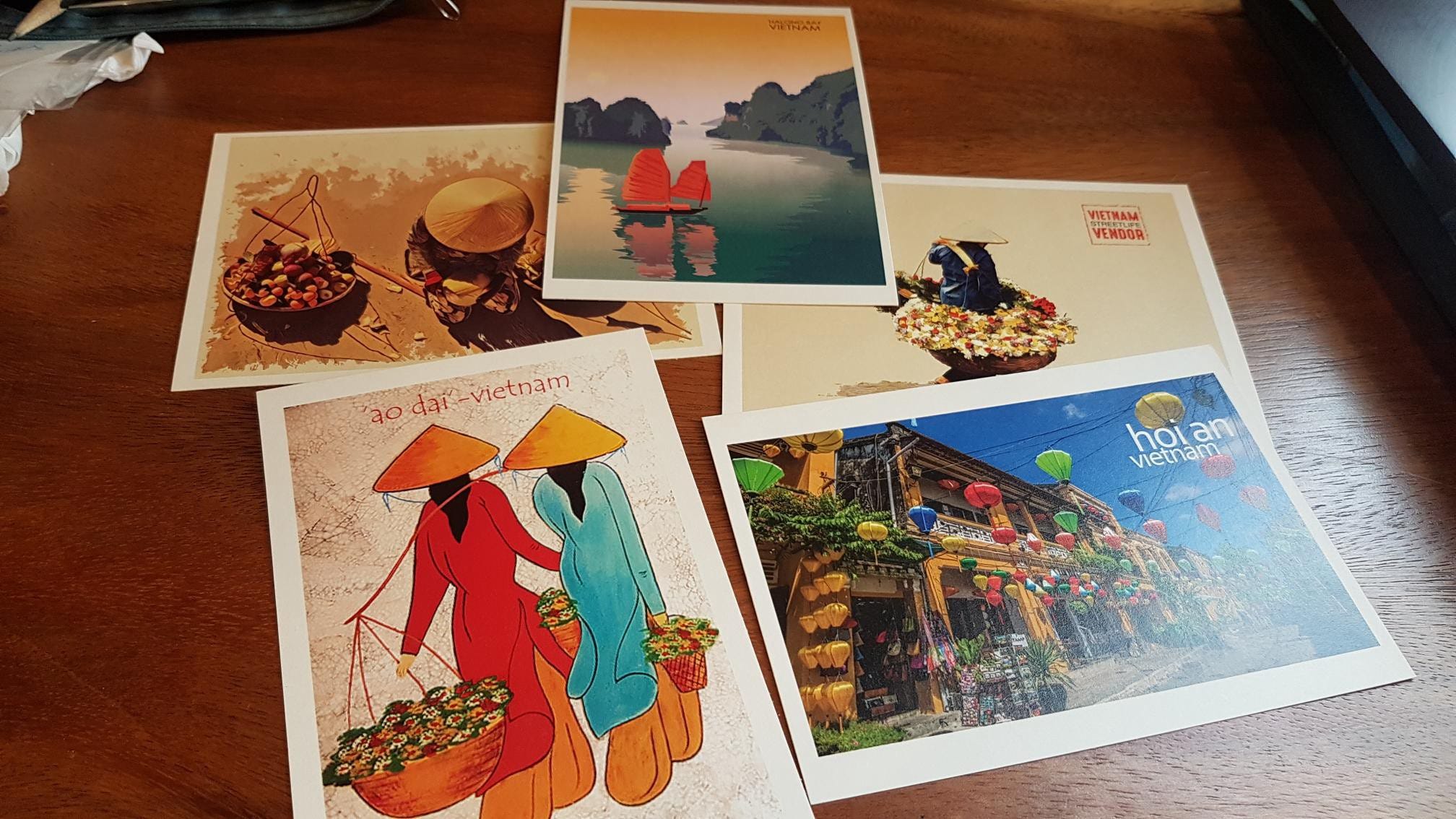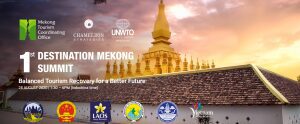The Virtual Destination Mekong Summit, held in August 25th by the Mekong Tourism Coordinating Office and public-private partnership Destination Mekong, with sponsorship of UNWTO Affiliate Member Chameleon Strategies, was well received by nearly 500 participants from governments and private sectors for its more dynamic and focused discussions leading to concrete takaways around this year’s theme: “Balanced Tourism Recovery for a Better Future”.

One river — Six countries — Endless opportunities
Mekong River is one of the world’s greatest river systems, with approximately 4,350km in length running through six countries in Asia. The Greater Mekong Subregion (GMS) is the trans-national region in the Mekong River — a geographic concept which came into known when Asian Development Bank introduced The Greater Mekong Subregion Economic Cooperation Program in 1992. The program has brought together six Asian countries of Cambodia, China, Laos, Myanmar, Thailand, and Vietnam and supported the implementation of high-priority projects. Thanks to the incredible natural diversity and fascinating cultures, tourism in GMS has become an emerging activity with huge potential for growth and impact on the livelihoods of its 340 million people.
As anywhere in the world, Covid-19 has triggered an unprecedented crisis to tourism economy in Mekong region and brought travel businesses to their knees. The objective of the summit was to provide a collaborative platform between public and private sectors to discuss illuminating insights and actionable steps for in-region businesses during the pandemic, and to strengthen the sense of the Mekong zone as a single tourism destination, since the region welcomed 59.8 million international tourist arrivals in 2016 representing a 3% share of the global market.
Destination Mekong Summit 2020 was considered as one of the most significant events of the year for tourism. The summit featured a serie of panels of private sector leaders along with ministers from the six member countries and high-level representatives from international organizations, sparking an open and useful exchange of ideas and opinions on how travel businesses in GMS can survive in the short term and collective action plan to best prepare for an accelerated recovery post crisis.
Key takeaways
The key conclusion from the summit was the need for rebuilding confidence and trust in traveling public through accurate, transparent and timely communication; evidence of safety protocols implementation; development of virus-tracing apps and contactless technology; and the readiness of local healthcare facilities. There was also an emphasis on the paramount importance of industry collaboration to accelerate the tourism recovery together, through the sharing of innovation and more responsible business practices, co-creation of marketing campaigns, as well as governments’ supports to business community. While public health is on the top of each country’s agenda, there was a call for the GMS countries to lift their international travel restriction as it is believed to be the only way to save tourism.
Executive Director of Mekong Tourism Coordinating Office — Mr. Jens Thraenhart addressed the summit at its opening, introducing some of the initiatives that have been launched by Destination Mekong to help the region with a balanced tourism recovery.

The first session of the summit focused on how Covid-19 DISRUPTION presents opportunities for destinations to reflect on their management and development strategies. According to Dr. Simon Hudson — Professor at
University of South Carolina, USA — Author of the book “Covid-19 & Travel”, there are 3 practices presenting key traits of successful leadership that destinations and businesses should follow during this challenging time. (1) Adaptability, such as changing business models (ie: “Ghost ship tours” in the south coast of England), or amendment of government policy. (2) Open line of communication to stakeholders, employees, and the public. (3) Collaboration, since it’s more important now than ever we need to learn from each other, share corporate social responsibilities, and adopt cross-marketing for collective promotion and sales. While Dr.Hudson held out the belief that tourism is incredibly resilient, he concluded that it would take at least 2–3 years to bounce back and that he hoped this would be a wake up call for destinations who had been over-dependent on tourism. “It’s time for more diversified economy and changing policies” he added, and giving the example of 12-month Barbados Welcome Stamp — a new visa incentive which allows remote workers to live and work from the Caribbean country for up to a year.
Dr. Hudson also praised Vietnam for Covid-19 containment efforts and affirmed that countries that prioritize public health will experience stronger and earlier recovery. Countries focusing on its people not only demonstrates strong and rational leadership but also can be the winner in the long run, since the global reputation as safe destinations will gain trust from public, thus attracting people to travel, work, and live there in the future.
The RECOVERY was the focus point of the next session when H.E. Weerasak Kowsurat — Senator, Royal Government of Thailand expressed his optimism that GMS, as a part of ASEAN community, would witness impressive rebound, especially for intra-regional tourism thanks to ASEAN visa exemption policy for its member countries. The government of Thailand showed their confidence to be the region’s pioneering country to reopen international border for tourism. “Thailand’s Tourism ministry will join a meeting with Public Health, Interior, Foreign and Transport ministries on Aug 27 about the plan to open the country to tourists from low-risk cities or provinces who seek an excursion to some destinations with direct international flight routes such as Phuket and Koh Samui”, His Excellency shared. While the government of Myanmar fears that lifting international travel restriction at the moment might bring next wave of the virus as the country does not have facilities and resources to contain another outbreak, they shared the similar opinion with Thailand that tourism reopening must be placed at the top of national agenda, and that the development and upgrading of digital communication is vital to regain public confidence to travel again.

In the third session, the representative of national tourism authority from Vietnam joined the panel to discuss the role of GOVERNMENT in supporting business and mitigating economic loss. Dr. Ha Van Sieu — Vice Chairman, Viet Nam National Administration of Tourism started with some negative statistics, sharing: “As many other countries, Vietnam’s tourism is heavily affected by the pandemic, with 62.4% and 46% decrease in international and domestic travel respectively. The pandemic also costed Vietnam tourism appx. $9 billion till Q2/2020 as tourism revenue was estimated to have tumbled 48%.” Dr. Sieu continued by sharing Vietnam government’s effective recovery measures and policies put in place: “We introduced 5-month tax delay for epidemic-hit businesses, deferred the PIT until December 15, cut the fees for takeoff, landing and aircraft operating services fees by 50%, and reduced 2% of interest rates on loans for SMEs”.
When asked which countries Vietnam was open up to for tourism in near future, Dr. Sieu mentioned that the country was targeting important markets including Japan, Korea, China, Taiwan, Australia, and New Zealand for bilateral partnership to reopen tourism. These are also the countries that have the virus situation under control. The government is working with different ministries to ensure safe conditions to receive international tourists.

Since the Covid-19’s lockdown has ended, TRAVEL IN CHINA is restarting, what lessons to be learnt from the middle kingdom? With a very encouraging 70% of capacity for domestic tourism, both airline and hotel occupancy have seen gradual recovery. Speaking on behalf of China’s government, Mr. Mi Han — Analyst, Ministry of Culture and Tourism of PR China encouraged other governments to be decisive and bold with policy making, and also to develop tracing technology to prevent the virus spread and increase travelers’ confidence. When asked about advices for business sector, he said that business should be informed about new travel patterns to diversify and update product offerings, and optimize technology in the entire travel experiences from pre to post trip, including marketing, communication, online reservation, online check-in, and online surveys. While China brought to the table certain practical lessons, many concerned if other GMS countries could do anything similar, since China has large population with rising upper middle class and high-spending consumers, unlike the others. More details about China’s domestic tourism recovery can be found here.

The next session of the summit was given over to the perspective of consumer — DEMAND SIDE, with the discussion about behavior changes and expectations of 2 key markets for Mekong Region — Japan and China. The two seem to share some similar traits including: small groups of fewer than ten people are preferred, more likeliness to travel with family and friends rather than joining big groups with strangers. Put it another way, FIT and small groups travel will rebound sooner than GIT, especially for Chinese market. “There is an increasing consumption of short video/livestreaming on WeChat, Weibo, Chinese version of Tiktok called Douyin among Chinese community, governments and DMOs should then identify new channels for more effective and efficient communication and marketing”, added by Mr. George Cao — CEO, Dragon Trail Interactive.
Meanwhile, Junichi Kumada — CRO, JTB Tourism Research & Consulting Co. also addressed insufficient and inaccurate information what dented Japanese people’s confidence to travel soon after the pandemic. Which means, maintaining timely and clear communication are essential to regain travelers’ confidence. Vietnam and Thailand are top countries that the government of Japan wants to reopen tourism with at the moment thanks to their successful response to the virus.
The topic of SUPPLY SIDE and SUSTAINABILITY came next with active discussion from senior executives of travel suppliers and conservation organizations in GMS, focusing on strategies for travel companies to get ready post Covid-19, while commiting to sustainability guideline. Main keywords for business were to maintain relationship with high-performing staff so that they could have them back on board immediately once travel restarts, optimize real time data for business recovery plan, implement global safety and cleaning protocols, create innovative experiences (VR tours), and collaborate with different stakeholders for collective marketing of destination. At the same time, business’s commitment to minimizing negative impacts and maximizing positive ones for both the environment and local communities are vital for sustainable tourism development. Public-private partnership are also essential to tackle some of the burning sustainability issues in tourism such as child labor and sexual exploitation, plastic pollution, climate change, and illegal wildlife trafficking.

The takeaways
Mr. Siniša Topalović — Global Head, Tourism Advisory Horwath HTL concluded the panel discussions with concrete takeaways from both public and private sector perspectives.
For public sector, he reaffirmed 5 effective strategies to accelerate tourism recovery. The first is accurate, reliable, relevant and timely communication on components such as safety alerts, new norms, new offers, or any changes in visa and immigration policies. Other important actions include prompt responses to inquiries, especially on social media and adjustment on destination websites to keep public informed of important updates. Second is to empower business community by creating B2B communication platform to share market insights. Third is to optimise, in the sense of digitalizing processes, adjusting organizational structures, and removing bureaucracy. Forth is to prioritise product, meaning to identity low hanging fruit products that adhere to epidemiological measures and to refocus on preparation and development of “safe” and “out of the box” experiences. Last but not least is to adapt marketing, by revising strategic documents and budget allocation, as well as putting emphasis on building online visibility and creating digital inspiring content.

For private sector, Mr. Topalović devised his thoughts according to different sub-sectors. With hotels and restaurants, he suggested to adjust marketing and sales strategies targeted staycation-ers, such as offering package deals for local market or FOC Covid-19 testing if purchasing x nights. For airlines and airports, implementation of contactless technology to completely digitalize customer’s jorney is crucial to minimize unnecessary human contact while at the airport and up in the air. Similarly, agencies and tour operators also need to digitalize all practices across business operations. Implementation of sanitation measures and new protocols is a must-follow for all businesses.
Read the full article at Medium: https://medium.com/@baolinhnguyen/a-snapshot-of-the-1st-destination-mekong-summit-2020-b1d7f43edd48
